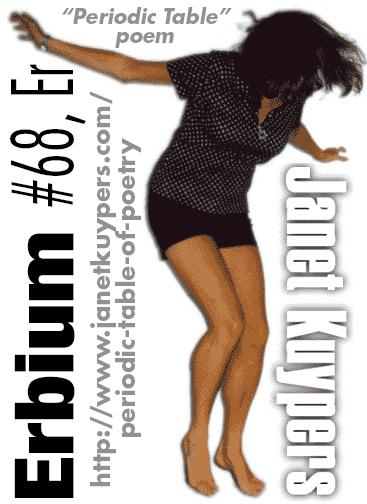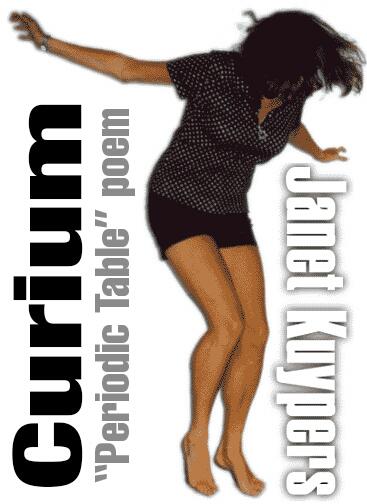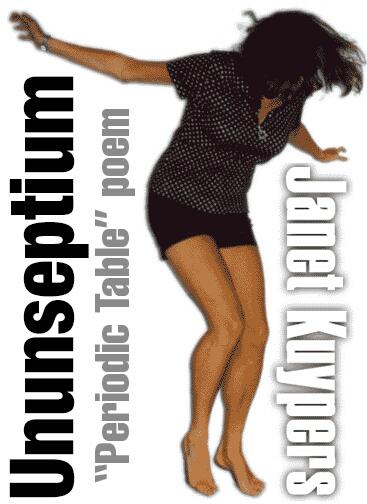Erbium
Janet Kuypers

(poem from the “Periodic Table of Poetry” series, #68, Er)
6/27/14
On the east coast,
shopping once
with a gay friend of mine,
we walked past a guard
at the empty clothing store
to browse for clothes.
My friend held up
a pink shirt,
asked my opinion.
I looked at it,
then at him
and said,
“I’m not a pink person,”
and we both turned
to the clothing racks.
I walked to a farther rack
and pulled out
this goth girls’ color of choice,
held up the black shirt
for his opinion.
Since he was farther away,
he responded loud enough
to confuse the large
African-American guard
when he said,
“I’m not a black person…”
And I don’t care if “PINK”
is the largest ad campaign
of a national lingerie company.
And okay, the pink ribbon
is an honor to my mom
and breast cancer research.
But I’ve never had
a love of the color
until I heard of metals
glowing in a brilliant
pink luminescence.
Because in the science of spectroscopy
(analyzing light from chemicals
through a prism), scientists discovered
stunning pink crystals that glinted alluringly
that would glow even more brilliantly
under fluorescent lights.
That has to be the element Erbium…
And any Erbium compounds
are invariably a faint pink, and —
wait a minute,
why am I going on
about Erbium
and it’s very distinct pinkness?
Well, there were spectroscopic bands
in the infrared part of the spectrum
of Erbium, and these allow Erbium
to not scatter light (or data)
in optical fibres
(the kind for all phone calls
or all Internet data transfer).
Optical fibres are gossamer thin
threads of glass, and they are
a rare optical perfection
that needs just the right element
to carry our voices,
or carry all data
without losing it to the atmosphere.
And if that element has to be pink,
then I guess Erbium
can give me another reason
to like the color pink too.



